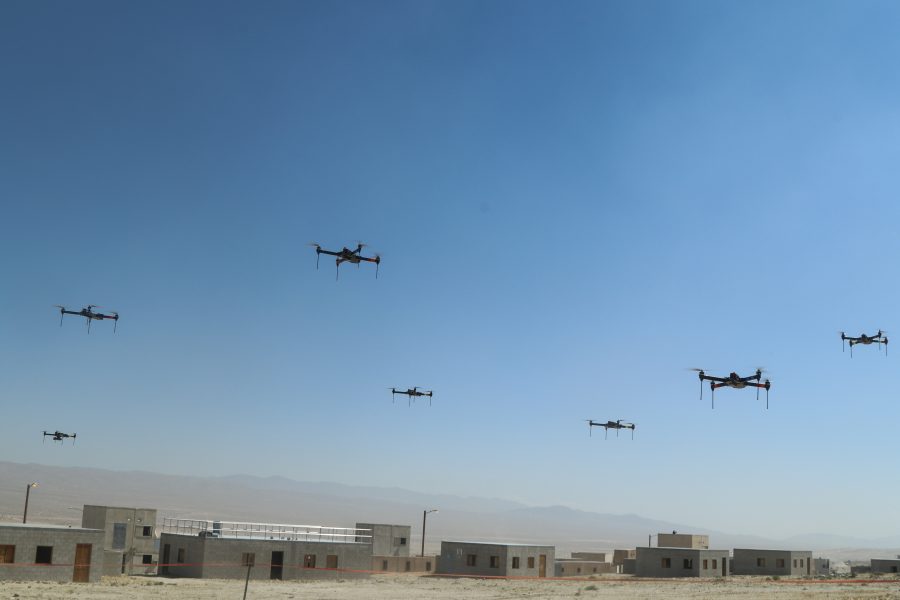Following the Department of Defense announcing its new Replicator initiative, lawmakers and experts voiced a range of opinions on the effort’s potential and challenges in a House Armed Services subcommittee hearing Oct. 19.
The Initiative, led by Deputy Secretary of Defense Kathleen Hicks, aims to rapidly deploy “multiple thousands” of cost-effective drones in “multiple domains” within the next 18-24 months. The Pentagon claims this effort will help counter China’s military size with a harder-to-predict, target, and defeat force, reducing human risk.
Bryan Clark, senior fellow for the Hudson Institute, emphasized the importance of Replicator in enhancing the U.S. military’s ability to analyze potential solutions creatively. However, he pointed out a critical challenge facing the initiative’s implementation
“The biggest challenge Replicator faces is integrating unmanned systems together in ways they are going to enable them to communicate with one another, be managed by command-and-control system, and then operate in a way that creates creative operational concepts for us to pursue, and dilemmas for enemies to deal with,” he said.
Historically, DOD has struggled with integrating systems between different services or domains, Clark noted. And the current approach for Replicator, which involves acquiring vehicles and entrusting their integration to individual services.
Last month, Hicks emphasized that the Replicator Initiative won’t require additional funding or create new bureaucracy by saying that DOD “will not be asking for new money” for fiscal 2024.
Without additional funding, however, Dr. Bill Greenwalt of the American Enterprise Institute voiced concerns that Replicator might divert resources from other crucial needs.
“Right now, there are very few pods of money that the department can actually use and move around in the year of execution, to essentially focus on things that look like they’re going to be something that we can scale up,” he said.
He also pointed out the challenges associated with changing the Pentagon’s culture and processes, urging a more “streamlined and innovative approach.”
His point was echoed by Dr. Paul Scharre, executive vice president at the Center for New American Security. who stressed “the need for speed.”
“The DOD has had recent successes and breaking the mold and moving quickly,” Scharre said. “The Defense Innovation Unit is brought in commercial technologies in a matter of weeks and months, not years and decades. But too often these innovation success stories have been small-scale. To fill thousands of systems, DOD will need to operate quickly at this scale. Something that is often struggled to do.”
However, should Replicator succeed with Congress’s support, Scharre said it could set a precedent for rapid acquisition. He also emphasized the necessity of the initiative, given the rising per-unit costs of traditional major weapons platforms.
Others, however, had concerns regarding the sources of components and materials that the U.S. relies on.
Rep. Ro Khanna (D-Calif.) asked the outside experts whether there is a clear understanding of the Replicator program’s objectives and the potential vulnerabilities it may create for the U.S. defense industrial base.
“I think that’s a question that the Congress needs to continuously ask,” said Greenwalt. “I’ve talked to a number of drone manufacturers who would like to scale up and they’re looking at the supply chain and a lot of that supply chain is not American or even allied.”
This dependency on foreign suppliers can be problematic when attempting to scale up production quickly.
In 2019, Congress passed a law prohibiting the Pentagon from purchasing Chinese-made drones and components. Nevertheless, Beijing continues to be the largest source of U.S. imports for machinery and mechanical appliances.
Should the Pentagon and Congress not work together to address the obstacles facing Replicator, Clark warned that this project is just increasing the size of forces without enhancing their effectiveness.
“It has a good goal of solving near-term operational problems faced by commanders, but its implementation, it’s going to have to make some changes that start aiming at the right types of objectives, not just math,” he said.
